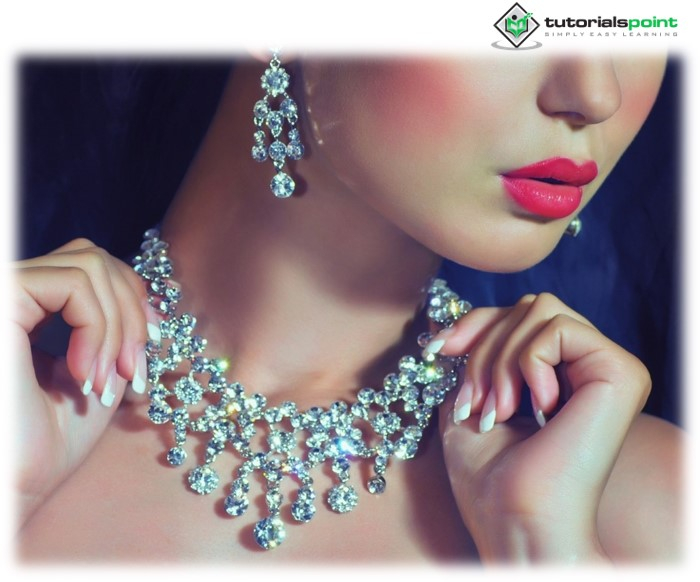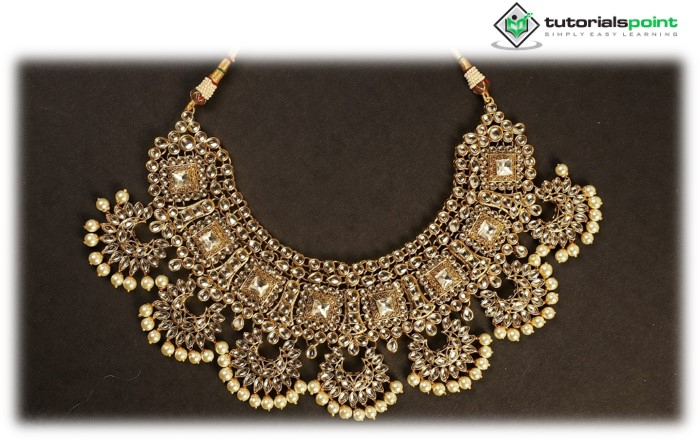

When it comes to an Indian bride, her wedding attire frequently serves as a nod to tradition, giving her the chance to reflect on and honour her ancestry. The most popular bridal jewellery is uncut diamond jewellery, popularly known as "polki," while the most popular bridal attire is saris and lehengas. Craftsmanship of this calibre involves hard labour and exacting skill. A single item may take several weeks or even months to complete. The most prestigious location for Polki must-haves nowadays is Bikaner in the Indian state of Rajasthan. About 2,500 years ago, polki jewellery first appeared. It is thought that Mughal monarchs brought it to the Indian subcontinent and that, as a result, other royal families in the nation developed a taste for it.

Today, stunning bridal must-haves like hand harnesses (hath phool), nose rings (nath), headpieces (matha patti or maang tikka), necklaces, earrings, rings, and cufflinks and buttons for the groom are made from uncut diamonds or polki stones. Of course, the soon-to-wed couple is not the only one who will be wearing jewelry. At an Indian wedding, you’ll see dozens of guests wearing Polki jewelry. It’s only that the pair tends to find it especially appealing because it enables them to pledge their marriage to their illustrious past.
A diamond that has not undergone any physical or chemical alterations, including cutting or polishing, is used in polka. They are typically cut to follow the original structure of the stone and are frequently kept in their original rough form. They have a non-faceted, polished surface. Because of this, no two pieces are identical, making each polki individual and special. In fact, it is one of the earliest types of cut diamonds, having its roots in India far before the invention of western cutting techniques. The fact that polkis are the purest type of diamonds accessible accounts for their high cost. Its worth is also increased by the fact that these motifs are frequently embellished with valuable stones and pearls.
Polki jewellery has a close connection to our culture and is recognised as wearable art. For brides, it’s a source of joy and a means to complement their modern appearance with a reminder of the past. It also helps that the magnificence of these motifs harmonises beautifully with traditional Indian clothing. The intricate goldwork of polki perfectly complements Indian couture, particularly the many types of embellishments that are frequently used on bridal apparel.
More than a thousand years ago, the Mughal Era saw the emergence of the art genre known as polki. It became a specialty to create conventional jewellery with uncut diamonds. This craft was a Bikaner specialty that later spread to other regions of the nation. Different colours are used in polka-dot jewellery. Initially, uncut diamonds were used to shape the polki jewellery. The artisans’ enamel work on this jewellery gave the pieces more colour and radiance. Because they weren’t polished, the uncutdiamonds had a unique and utterly alluring charm. Polki jewellery, a gift from the Mughals, is more than just a piece of cultural history. The various hues and patterns that are heavily influenced by Rajasthani tradition have also made their way into contemporary markets in a number of other states. Today, one can purchase exquisite polka pieces that were made in Gujarat, Hyderabad, Orissa, and even Uttar Pradesh. Polki is a type of jewellery and craft that can be found everywhere because each state has added its own unique innovation or technique.

The traditional jewellery style of polki has also evolved to fit the trend toward informal dressing. Many jewellery designers are now using the polki process to create jewellery for casual wear, giving women the choice to wear diamonds on informal occasions as well. Indian brides place a high value on polkis, mang tikkas, and kangans. The colours and shapes of this jewelry, which is best suited for bridal and traditional wear, make the trousseau appealing and attractive to everyone. Polki is a wonderful gift item for any occasion aside from weddings and religious celebrations.
In this jewellery design, the colour and natural beauty of diamonds are shown, as opposed to being obscured by the cut diamonds’ sparkle. The raw brilliance of Polkijewellery is created by combining uncut diamonds with other precious and synthetic gemstones. The jewellery from Polki is traditionally and culturally styled. This type of jewellery has evolved in a variety of ways over the last few years to distinguish it from other Indian handicrafts. Modern advancements go beyond the use of the uncut technique alone, making it popular both within the nation and outside. The appearance of polka-dot jewellery has been improved by the addition of rubies, emeralds, and pearls. People in the west believe that polki jewellery is incredibly lovely and traditional. Since the dawn of time, nations like America, England, China, and Japan have been particularly fascinated with Indian jewellery, particularly its diamonds. Many people around the world have praised the various cuts, techniques, and designs that are uniquely Indian.
The resurgence of polki jewellery is a result of the current fascination with traditional Indian crafts. By drawing inspiration from royalty, Polki’s artisans create collections that have historical resonance. They then reimagine these designs using their distinctive craftsmanship. Modern silhouettes in pastel colours are combined with age-old traditional techniques in polki. Each collection goes beyond trends and features priceless jewels like pink sapphires, Mughal-carved rubies, ancient European-cut diamonds, classic rose-cut diamonds, and natural pearls. Polki jewellery combines timeless design with a strong sense of history. Owning polki jewellery, one of the oldest types of traditional jewellery, is seen as a priceless addition to an Indian woman’s jewellery collection. Each culture has a piece of polki jewellery that is distinctive. For instance, Rajputi brides favour necklaces with stiff beads. Statement earrings like Kashmiri jhumkas and kanser are perennial favourites with today’s young brides, as are chokers layered with long haars or heavy round necklaces.